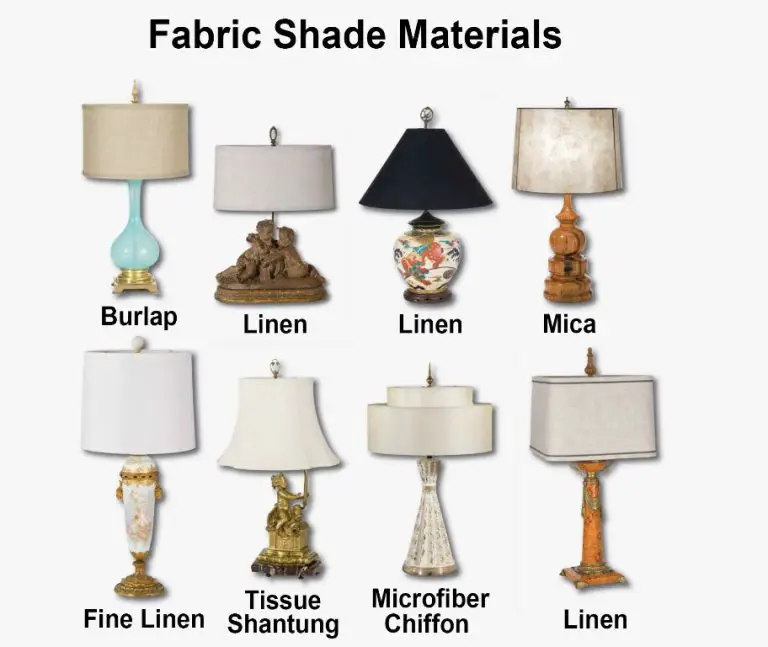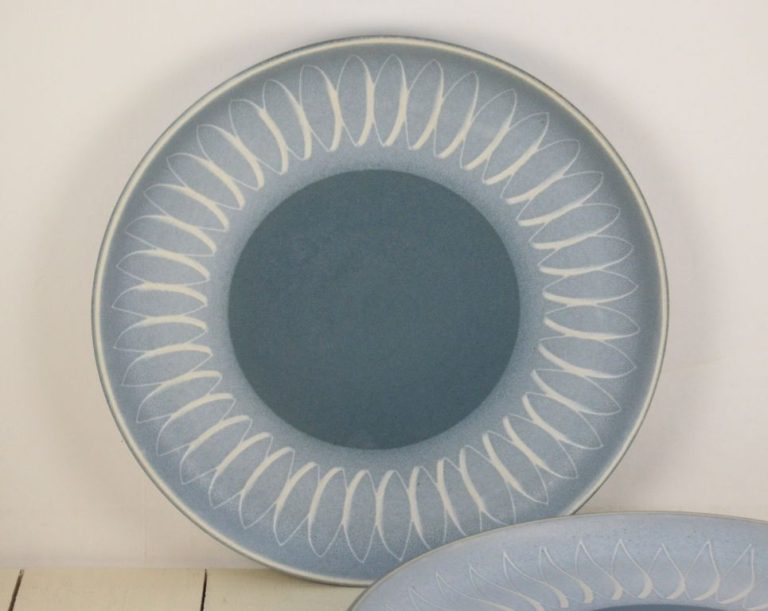What Cultures Are Connected With Coil Pottery?
Coil pottery is a method of handbuilding pottery that dates back thousands of years. It involves rolling out coils or ropes of clay and then stacking them on top of each other to build up the sides of a pot. According to Merriam-Webster, coil pottery can be defined as “a pottery common among American Indians made by building up sides of pots with successive rolls of clay.”
This technique allows artisans to create vessels with rounded, smooth sides and no seams. The coils are smoothed together from the inside of the pot using fingers, paddles or other tools. Coil pots were created by many ancient cultures around the world, but were especially prevalent among Native American groups.
History of Coil Pottery
The origins of coil pottery can be traced back thousands of years to early human civilizations around the world. Archaeological evidence indicates that coil techniques were used to create pottery in both the Old World and New World independently.
Some of the earliest known examples of coil-built ceramic vessels have been found at sites dating back to 6000-5000 BCE in places like Japan and Mesopotamia (The History of Coil Pottery in the Southwest United States). Coiling methods allow clay to be built up gradually and are well-suited to making large vessels or those with rounded bodies. Early coil pots were often simple in form and decoration but provided utilitarian vessels for storing, cooking, and transporting foods and goods.
Over time, coil pottery techniques spread to many cultures around the world. Potteries innovated shapes, surface treatments, and firing methods – expanding the artistic and functional possibilities of coil-based ceramics. Yet the basic process of rolling and stacking coils while blending them together was passed down for thousands of years and is still practiced today.
Coil Pottery in Ancient Americas
Coil pottery has a long history in the ancient Americas, particularly among the Mayan, Incan, and Anasazi cultures. The Mayans were prolific potters, producing brightly painted vessels, figurines, and incense burners using the coil technique from around 2000 BC to the arrival of the Spanish in the 16th century The History of Coil Pottery in the Southwest United States. Mayan coil pots were often painted with elaborate scenes depicting gods, rulers, and mythology.

The Inca civilization also produced coil pottery, though not as prolifically as the Maya. Incan coil vessels were typically plain and utilitarian, used for storage, cooking, and transporting goods. However, some finer Incan pottery made for ceremonial and burial purposes feature geometric designs Coiled Ceramics.
In the American Southwest, the Anasazi people crafted beautiful coiled pots and baskets starting around 300 BC. Anasazi coil vessels were made from locally available clays and decorated with black geometric designs on a white background. Their pottery evolved into more elaborate styles until the disappearance of the Anasazi around 1300 AD.
Coil Pottery in Africa
Coil pottery has a long history in Africa, dating back thousands of years. Two important cultures known for their coil pottery are the Nok and Igbo-Ukwu.
The Nok culture flourished in what is now Nigeria between 1500 BC and 200 AD. They are best known for their expressive terracotta figurines, created using the coil technique. The figures often depicted animals, humans, and fantastical creatures (Source).
The Igbo-Ukwu culture thrived in eastern Nigeria between the 9th and 10th century AD. They became adept at creating elaborate coil pots, some over 5 feet tall. Many were adorned with intricate sculptures and designs, indicative of a sophisticated metalworking tradition (Source).
These coil pottery traditions showcase the artistry and technical skill of ancient African cultures. The relics provide insight into their beliefs, values, and ways of life.
Coil Pottery in Asia
Some of the earliest known coil pottery originated in Asia, particularly from the Jomon culture in Japan and the Ban Chiang culture in Thailand. The Jomon period in Japan lasted from around 14,000 BCE to 300 BCE. They are especially known for their elaborate coil-built pottery, some with complex decorations of ropes, baskets, and geometric patterns (Source). The coil technique allowed them to build pots with thicker walls and deeper vessels than previous techniques. Their pottery provides insight into the Jomon lifestyle of hunting, fishing, and gathering.
In Thailand, coil pottery fragments dating back to 3600 BCE were discovered at Ban Chiang in the 1950s (Source). The reddish-brown pottery was made by coiling rolls of clay into shapes and decorating with geometric patterns. This early use of coil technique in Southeast Asia shows it was developed independently across ancient cultures.
Coil Pottery in Europe
Coil pottery has a long history in Europe, dating back to the Neolithic era and Bronze Age. The Cucuteni-Trypillian culture, which existed from around 5500 BCE to 2750 BCE in parts of modern-day Romania, Moldova and Ukraine, produced some of the earliest examples of coil-built ceramics in Europe (Source). Their pottery featured intricate decorations and designs, applied using stamps or by painting. The Baden culture, which existed in parts of Central Europe from around 3200 BCE to 2800 BCE, also produced coil-built pottery with geometric motifs (Source). Coil techniques continued to be used in Europe through the Bronze and Iron ages for both utilitarian and decorative wares.
From the Neolithic era to the bronze age, most ceramics in Europe was made through coil construction, which provided a sturdy yet malleable construction method. Coil building remained a common technique in many parts of Europe until the development of the pottery wheel. However, handbuilt coil vessels are still created today by studio potters who appreciate the organic irregularities and personal touch of this traditional approach.
Modern Revival
Coil pottery experienced a revival in the 20th century as artists around the world re-discovered this ancient technique. Modern coil pots are made using the same methods as ancient times, by rolling out coils of clay and stacking them to form the vessel shape. However, contemporary coil potters have expanded the technique by incorporating new shapes, surface decorations, and firing methods.
Notable modern coil potters include Tsutomu Oi from Japan, who combines coiling with thrown forms, and Richard Shaw from the United States, who makes trompe l’oeil ceramic sculptures coiled from porcelain. Many Native American artists keep coil traditions alive, like the famous black-on-black pots made at Acoma Pueblo. Coiling is also taught in art schools and community studios, allowing more people to learn this satisfying hand-building technique.
While ancient coil pots were often limited by available materials and technology, modern coil pottery exploits new glazes, alternative firing methods like raku, and mixed media additions. But at its core, contemporary coiled vessels retain the handmade improvisational quality and rich surface textures of ancient examples. The labor-intensive process connects potters across centuries through a shared knowledge of ceramics (The History of Coil Pottery in the Southwest United States).
Notable Coil Pottery Examples
Coil pottery has been practiced for thousands of years, resulting in many remarkable works that demonstrate the skill and artistry possible with this technique. Some of the most famous coil pottery examples come from renowned artists who have mastered coil building.
The artist Gordon Baldwin is known for his large, perfectly smooth coil pots often made with red or black clay. Many of his pieces are in the collection of the Victoria and Albert Museum in London.
Louise Goodman, another famous coil potter, built tall standing vessels embellished with carved patterns. Several of her intricately designed pots are housed in the Philadelphia Museum of Art.
The acclaimed Native American potter Maria Martinez crafted elegant black-on-black pots using the traditional coil method. Her innovative pottery made her one of the most famous Pueblo artists, with works collected by major museums.
Other exceptional examples can be found among ancient coil-built ceramics, like the figurines and vessels of the Nok culture in Nigeria and elaborate Mayan chocolate jars. These artifacts provide evidence of coil pottery’s long and diverse history across the world’s cultures.
Coil Pottery Methods
Coil pots are made using a simple coiling technique that builds up the vessel from the bottom up. Here is an overview of the step-by-step process for making coil pots:
1. Create the base. Roll out a pancake of clay and form it into a circle. This will be the bottom of your pot.
2. Make coils. Roll clay into long sausage shapes called coils. Make coils of even width and thickness.
3. Attach coils. Apply slip to the base or previous coil. Press a new coil onto the pot and blend the coils together. Continue coiling upwards.
4. Shape the pot. Use your fingers, wooden tools, or a rounded object to shape the interior and smooth the coils. Refine the shape as you build up.
5. Refine the surface. Smooth over cracks and bonds between coils. Use various techniques like burnishing, scraping, or paddling to achieve desired surface textures.
6. Allow to dry. Let the pot air dry completely before firing. Very thick pots may need to dry for weeks.
7. Fire the pottery. Follow specific firing guidelines based on type of clay used. Typical range is 1800°F – 2200°F.
With practice, coil pots can be made very smoothly and with uniform thin walls. Patience is needed as each coil must dry before adding the next. It’s an intuitive technique requiring an understanding of clay’s plasticity. For beginners, it’s ideal to start with small bowls and vases to learn. Read a step-by-step tutorial with photos at https://thepotterywheel.com/how-to-make-coil-pots/.
Conclusion
Coil pottery has a long and rich history spanning many cultures across the world. From ancient times up to the present day, coil techniques have been used to create beautiful and functional pottery pieces. Though the methods vary between cultures, the basic process of building up walls with ropes of clay remains the same. Coil pots can be simple or elaborate, handmade or wheel-finished, plain or intricately decorated. They provide an insight into the lives and artistic expressions of cultures across history. Though largely supplanted by wheel-throwing today, coil-based pottery persists as both a folk tradition and a deliberate artistic choice. The unique aesthetic and textures possible with coil construction will likely continue to inspire potters and attract collectors. Coil pottery connects humanity across boundaries of time and geography through our shared desire to shape clay into vessels of meaning, purpose, and beauty.



